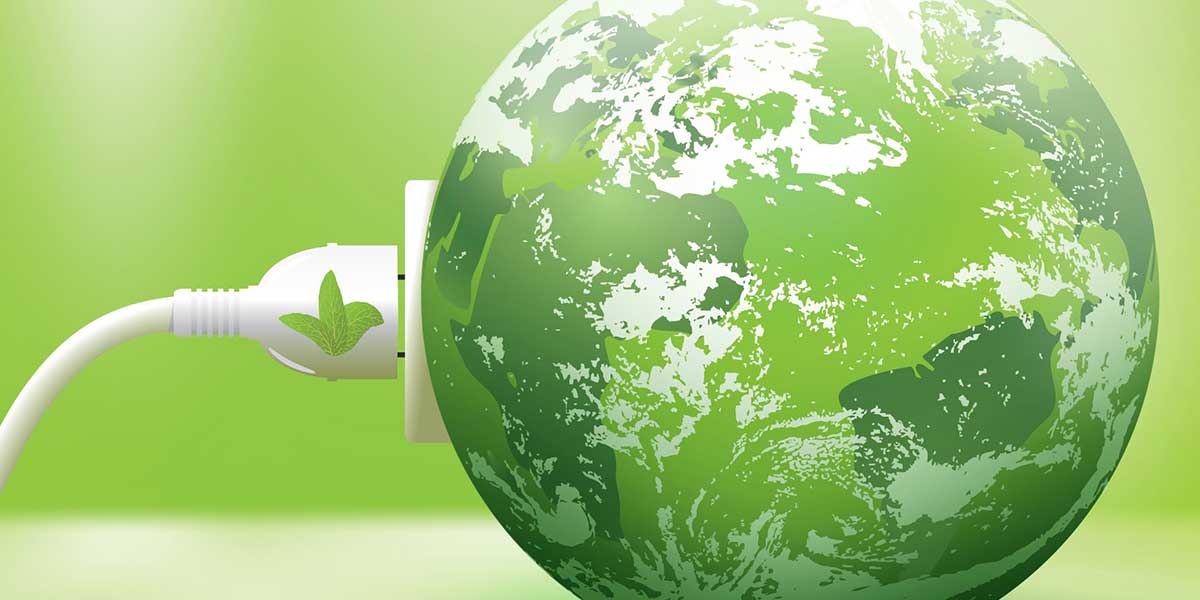Ecological energy independent buildings
Energy independent buildings are characterized by complete independence from public power networks and traditional energy sources. Independence achieved by using renewable energy sources integrated in the system. The largest share of energy has provided solar energy and application of bioclimatic and thermodynamic principles of functioning of the building. Using renewable energy sources that do not emit harmful substances. Thus built building are also green buildings.
This kind of structures not connected to the public network, and any excess energy produced is mostly used direct and kept for use in the winter months, through the energy system of reservoirs and accumulators. It is necessary whenever there is a surplus of produced energies building designed and constructed as the "Energy plus" means to create conditions for connecting buildings to the system for the accumulation and delivery of surplus energy to other consumers.
Rural farm, energy and economic indenpendent
Author: Nenad Pesic
Object: Rural Farm
Location: Niš
Realization: 1983.
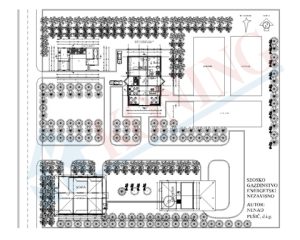
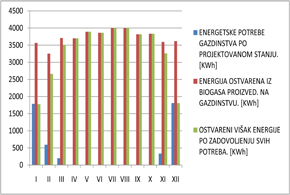
Owner of the company Nenad Pesic in 1983 graduated with subject Energy Independent Rural Farm. Applied solution: Passive system solar energy for heating and cooling, System of heating domestic hot water through solar collectors, Production of gas in the min pig farm, Production of electricity in the electric generator on bio gas.

The energy needs of the farm system works from the period 1970 to 1990.years are 79,751.00 kWh/a. With good thermal insulation and the production of biogas and electricity from biogas, after the rejection of all energy needs, household realizes a surplus of 35,744.00 kWh/a electricity.
- About Energy Efficiency
- Passive solar building and passive buildings
- Ecological energy independent buildings
- Ecological and economic energy independent village
- Innovative solutions of energy efficiency in buildings
- Energy audits of buildings and plants
- Improving the energy efficiency of buildings and plants
- Certification and preparation energy passports of buildings
Energy efficiency involves a series of measures to reduce energy consumption, and which do not impair the conditions of work and life.
Energetska efiksnost predstavlja skup mera za smanjenje potrošnje energije. Mere poboljšanja energetske efikasnosti treba najpre posmatrati kroz smanjenje gubitaka energije a zatim kroz smanjenje potrošnje. Smanjenje gubitaka energije se dobija, pre svega poboljšanjem karakteristika termičkog omotača objekata, poboljšanjem bioklimatskih parametara korišćenjem solarne energije u sistemu pasivnih solarnih zgrada. Smanjenje potrošnje energije pravilnim izborom opreme i uredjaja. Za uređaje kažemo da su energetski efikasni ako imaju visok stepen korisnog dejstva tj. male gubitke prilikom transformacije jednog oblika energije u drugi.
The ultimate goal is to reduce energy consumption to a minimum, and when it does not undermine the level of comfort more to maintain or even increase the level of comfort. Energy efficiency is the efficient use of energy, which increases the comfort and leads directly towards increasing the quality of life, economic competitiveness and energy security. The result of increased energy efficiency are significant savings in financial terms and the direct impact on the environment.
Basic requirements of passive buildings must meet the requirements that energy consumption for heating does not exceed 15 kWh / m2 / year. The high technical standards are provided by improvement of the thermal envelope of the building and installing systems for the recovery of air that serves as ventilation and heating system and implementation of other energy efficient systems.
Pasivna zgrada je energetski efikasna zgrada kod koje se udobnost stanovanja postiže bez uobičajenih sistema grejanja ili uređaja za klimatizaciju. Ove zgrade troše i do 90% manje energije nego standardne zgrade, pre svega zahvaljujući dobro izolovanoj konstrukciji bez termičkih mostova, izuzetnoj zaptivenosti i izolaciji otvora i sistemu rekuperacije vazduha. Takođe, pasivne zgrade neretko se oslanjaju na prirodne izvore energije, kao što su sunčeva i geotermalna energija. Važno je napraviti razliku između pasivne solarne zgrade i pasivne zgrade. Naziv pasivna zgrada ne dolazi od upotrebe sunčeve energije pasivnim sistemima (što je osnovna odlika pasivnih solarnih zgrada), već upravo iz činjenice da zgrada ne treba aktivan sistem grejanja, već se sve potrebe za grejanjem ispunjavaju sistemom rekuperacije toplote iskorišćenog vazduha.
Passive solar house, Uzice - PSK-01 "Dimitrijevic"
Author: Nenad Pesic
Object: PASSIVE SOLAR HOUSE 01 Dimitrijevic
Location: Uzice
Realization: 1988
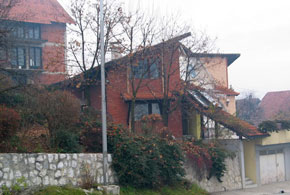
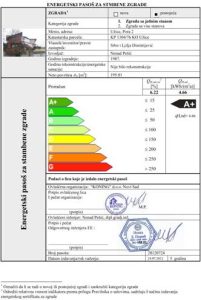
In the period from 1988 to 2012 are recorded the temperature of outside air of -20 ° C to + 38 ° C for up to 10 days. The internal temperature ranged from + 18 ° C to + 22 ° C.
Net usable area: 195.81 m22
Applied solution: Passive solar system for heating and cooling, the collectors for heating domestic hot water.
Additional investment: 3.6%
Period of return on additional investment: 2.5 years.
Passive solar house, Zlatibor - PSK-02 "Bozilovic"
Author: Nenad Pesic
Object: PASSIVE SOLAR HOUSE 02 Bozilovic
Location: Zlatibor
Realization: 2001.
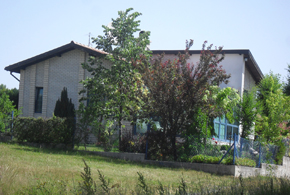
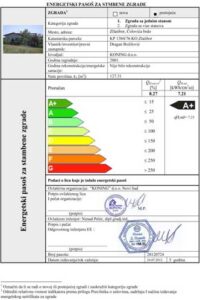
Net usable area: 127,31 m22
Applied solution: Passive solar system for heating and cooling, the collectors for heating domestic hot water.
Additional investment: 3.85%
Period of return on additional investment: 3.0 years.
Passive solar house, Uzice - PSK-03 "Lazic"
Author: Nenad Pesic
Object: PASSIVE SOLAR HOUSE 03 Lazic
Location: Uzice
Realization: 2002.
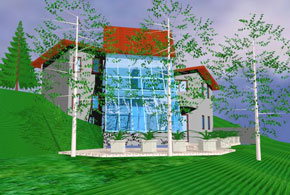
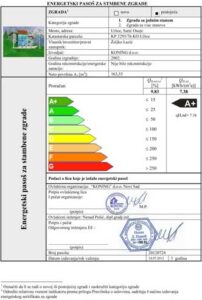
Net usable area: 163,55 m22
Applied solution: Passive solar system for heating and cooling, the collectors for heating domestic hot water.
Additional investment: 3.32%
Period povrata dodatnog ulaganja: 3,5 godine.
Energy independent buildings are characterized by complete independence from public power networks and traditional energy sources. Independence achieved by using renewable energy sources integrated in the system. The largest share of energy has provided solar energy and application of bioclimatic and thermodynamic principles of functioning of the building. Using renewable energy sources that do not emit harmful substances. Thus built building are also green buildings.
This kind of structures not connected to the public network, and any excess energy produced is mostly used direct and kept for use in the winter months, through the energy system of reservoirs and accumulators. It is necessary whenever there is a surplus of produced energies building designed and constructed as the "Energy plus" means to create conditions for connecting buildings to the system for the accumulation and delivery of surplus energy to other consumers.
Rural farm, energy and economic indenpendent
Author: Nenad Pesic
Object: Rural Farm
Location: Niš
Realization: 1983.


Owner of the company Nenad Pesic in 1983 graduated with subject Energy Independent Rural Farm. Applied solution: Passive system solar energy for heating and cooling, System of heating domestic hot water through solar collectors, Production of gas in the min pig farm, Production of electricity in the electric generator on bio gas.

The energy needs of the farm system works from the period 1970 to 1990.years are 79,751.00 kWh/a. With good thermal insulation and the production of biogas and electricity from biogas, after the rejection of all energy needs, household realizes a surplus of 35,744.00 kWh/a electricity.
The biggest problem with our planet today is the production of energy from renewable sources, but on condition of preserving the environment. Resources such as oil, solid fuels and hydropower are limited and increasingly adverse effects on the environment. The solution to this problem lies in renewable energy sources such as solar energy, wind energy, geothermal energy, tidal energy. Increasing the proportion of renewable energy sources is a prerequisite for the sustainability of our planet, as well as economic progress.
The growing unemployment of the population should be resolved with the implementation of all measures for the preservation of the planet and uses of renewable energy sources.
Innovative energy efficiency solutions based on its integration solutions to reduce energy consumption and the use of available energy sources in the present case.
To achieve such solutions require a good knowledge of all the factors affecting energy consumption and the possibility of obtaining energy from local, troops on the observed energy sources. It takes great knowledge but also experience.
An energy audit of the building entails the analysis of energy characteristics and technical tread the same building in order to determine the existing energy consumption, followed by the adoption of conclusions and recommendations for improving energy efficiency.
The main objective of an energy audit is that the collection and processing of a range of data on construction characteristics of the building in terms of thermal protection as well as the energy performance of different systems of energy and water, gain better insight into the energy balance of the existing facility, followed by proposing concrete measures to increase energy efficiency.
The preliminary energy audit of the building contains all the elements of the energy consumption in the building, elements that affect energy consumption and analysis of the data collected. Data on the energy performance of buildings is collected by a customer visiting buildings and talking with authorized and competent customer representatives. Data on actual energy consumption based on the invoice are very essential for the proper consideration of the potential savings in energy consumption. The report on the preliminary energy audit is the basis for activities to improve the energy efficiency of the building.
Detailed energy audit of the building pregled zgrade sadrži sve elemente zgrade koji utiču na potrošnju energije i se druge podatke iz Preliminarnog energetskog pregleda. U detaljnom energetskom pregledu,merenjem se proveravaju podaci o energetskim svojstvima zgrade i to oni koji su preliminarnim energetskim pregledom označeni kao bitni za poboljšanje energetske efikasnosti. Izveštaj o preliminarnom energetskom pregledu je osnova za donošenje odluke o izboru mera za unapredjenje energetske efikasnosti i izradi projektne dokumentacije za poboljšanju energetske efikasnosti zgrade. Detaljnim energetskim pregledom utvrdjuju se potrebni podaci za izradu energetskog pasoša zgrade
Improving energy efficiency in buildings represents the necessary actions for the implementation of energy efficiency and reducing energy consumption. For a good selection and proper application of measures to improve energy efficiency it is necessary to carry out a detailed energy audit of the building, determine the causes of increased energy loss and propose measures to prevent losses as well as measures to increase profits using available renewable energy sources.
Energy efficiency measures include behavior that is applied in order to reduce energy consumption. Regardless of whether it is technical or non-technical measures, or changes in behavior, all measures include the same, a generally higher level of comfort and standard of living.
The most common measures taken in order to reduce energy losses and increase energy efficiency are:
- Improving the thermal characteristics of the thermal envelope of the building.
- Improvement of bioclimatic elements that have an impact on energy consumption and use of passive solar building elements.
- Replacement of old conventional low-temperature boilers and condensing boilers.
- Replacement of old conventional boilers with boilers that using renewable energy sources.
- Replacing the old conventional boilers with heat pumps.
- Installation of heat recuperation from exhaust air in ventilation systems.
- Replacement of individual electric boiler for hot water with solar thermal systems.
- Installation of thermostatic valves on existing heaters.
- Installation of frequency converters consumption for larger consumers of electricity.
- Installation of devices for reactive power compensation.
- Replacement of conventional energy consumer spenders.
- Installation of devices for control and management of working energy.
Ada - Bus station
Author: Nenad Pesic
Object: Bus station, reconstruction
Location: Ada
Realization: 2012.
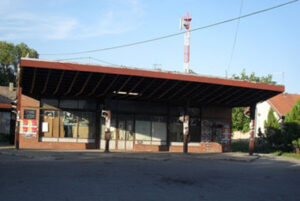
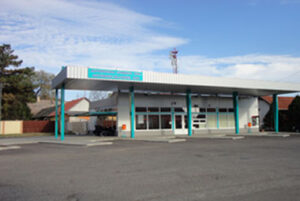
- Potrebna energija za grejanje pre rekonstrukcije: …. 33037,18 kWh/a
- Potrebna energija za grejanje posle rekonstrkcije:…. 8641,64 kWh/a
- Godišnja ušteda energije za grejanje: ……………. 24385,54 kWh/a
- Godišnja ušteda energije za klimatizaciju: …………28365,00 kWh/a
- Neto korisna površina objekta: 145,69 m2
- Primenjeno rešenje: Dobra izolacija, zamenjena stolaarija, podno grejanje sa termo pompom
- Dodatno ulaganje: 5,00 %
- Period povrata dodatnog ulaganja: 3,0 godine
Energetski nezavisna kuća – EEK – 05 Energetski nezavisna kuća
Author: Nenad Pesic
Objekat: PILOT PROJEKAT, EEK – 05 Energetski nezavisna kuća
Mesto: planirana lokacija Novi Sad, Srbija
Realizacija: 2013. god.
Energy certification of buildings is to establish the energy performance of buildings and a legal obligation. Based on the determined data by energy certification shall be made Energy passport.
The certification is based on the main project from which data are taken, checks on the building and entered into the budget for building energy efficiency by which manufactures energy passport of the building. By Energy Efficiency Elaborate, which is an integral part of the project for the building permit, in some cases not shown the right condition so it is necessary to determine the true state of the building.
Reasons for this may include:
- Projects are not well-defined material or method of construction.
- Contractors use materials worse than those defined by the project.
- Performers do not perform the work according to the rules of the profession and thus resulting errors in the construction of buildings that affect the energy performance.
Errors in the project, the choice of materials and method of construction become visible during the operation of buildings. Considering the above mentioned possible causes of inadequate construction should be in making energy certificates to think about testing the building prie making certificates. There are various methods of test and measurement parameters which influence the energy efficiency of the building.
